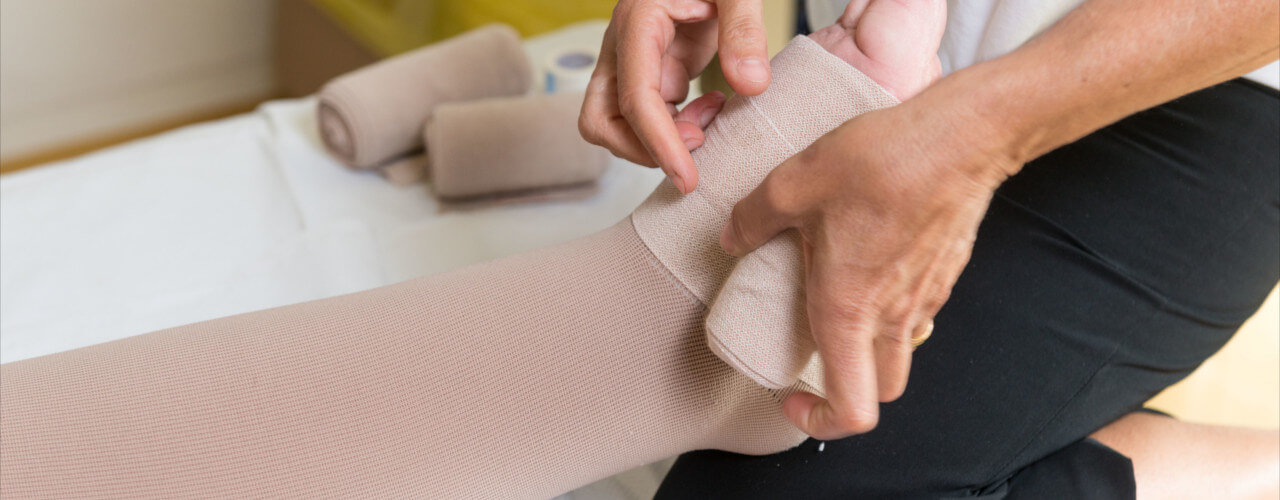
lymphoedema Unit
Lymphoedema is a chronic condition for which there is no cure. However, it can be controlled with early intervention. When the lymphatic system is blocked or damaged, lymph fluid accumulates in the tissue causing long-term swelling of parts of the body. Individuals affected by lymphedema seeking treatment should be seen by a specialist Physiotherapist. It is important to recognize the early signs of this condition.
Lymphoedema most often affects the limb, but can also occur in the face, neck and abdomen, genitals and internal organs.
Early signs:- Swelling
- A feeling of heaviness
- Soreness in the affected area
- Skin changes
- Clothing or jewelry may feel tighter
Unfortunately, lymphoedema cannot be prevented or cured entirely. Physiotherapy, however, can help to lessen the uncomfortable effects of lymphoedema.
Physiotherapists manage the condition primarily using manual lymphatic drainage – draining lymph fluid from tissues – as well as deploying multi-layer bandaging, skincare and exercises. In some cases positioning may be used by the Physiotherapist.
They will also advise on the use of special sleeves or support stockings and give more general advice to avoid aggravating the condition. Machines are also available for purchase. They are specialized and expensive and one of our highly skilled Physiotherapists can advise on the correct one for you.
Lymphedema physiotherapy addresses blockage in the lymph nodes that prevents proper drainage of lymph — a fluid that transports bacteria to the lymph nodes where they are destroyed — throughout the body, which causes severe swelling in the affected limbs. Lymphedema physiotherapy consists of massage, manual drainage of the blocked lymph fluid, and management of the condition with compression garments. Elevation and treatment with air-compressed bladders may also be used to normalize the size of the limb. The therapy is typically introduced by a specially trained physiotherapist in a medical facility and then continued daily by the patient and a caregiver at home.
Goals of Lymphedema Physiotherapy:- Increased range of motion/flexibility
- Decreased swelling
- Decreased pain
- Increased strength
- Restore function and improve the quality of life
Physiotherapy for Lymphedema
Massage of the limbs is one of the first steps in lymphedema physiotherapy. Daily practice of a method of sequential massage called complex decongestive therapy (CDT) is often prescribed. A therapist performs the routine in the early stages, with the goal of decreasing swelling in the affected limb. The process works by focusing pressure on the limb, which moves blocked lymph fluid through the body. Once the limb is down to normal size, the exercises can be taught to family and friends of the patient, who will continue the daily routine in order to prevent future swelling. Physiotherapy may also include elevation of the limb and compression with air bladders. Both methods help to move lymph in the proper direction. Elevation uses gravity to encourage the lymph to move, while compression with intermittently pulsing air bladders can also help to squeeze it through the body.
Patients undergoing physiotherapy can take several other actions to improve its effects. It can be helpful to avoid binding clothing and salty or spicy foods. Continued regular elevation of the affected limb can aid in drainage and relieve pressure. It is also important to keep skin clean, dry, and well moisturized in order to avoid infection.
Bangladesh Center for Rehabilitation (BCR).
Address
234 /C, Katabon More, New Elephant Road, Dhaka-1205.
Phone : +8801958060777 +8801958060770Email : info@bcr.com.bd
Home Physio Specialist Consultation Buy Products
